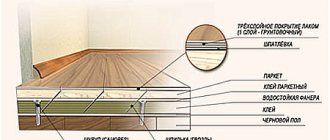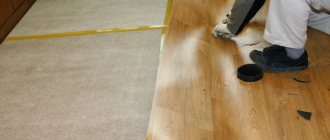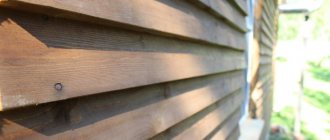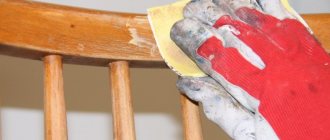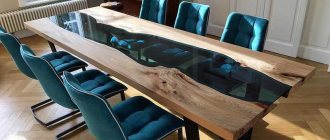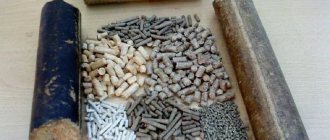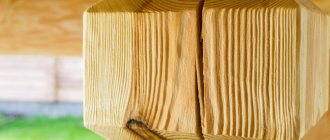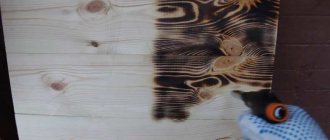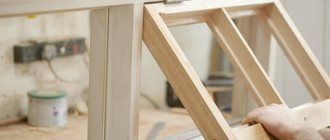Of all the available underlay materials, plywood sheets can rightfully be considered the best option, especially when it comes to laying synthetic flooring. If you lay linoleum on plywood correctly, the floor will last 20-30% longer than if a pressed chip backing was used. In addition, laying linoleum on plywood with your own hands is exactly the case when you can get to work without particularly fearing for the end result.
Plywood is ideal for linoleum
Is it possible to lay linoleum on plywood?
The best solution is not always the most obvious. Plywood doesn't have the best reputation for interior finishing work. Many experts believe that putting linoleum on plywood means dooming yourself to inhaling fumes of phenol and formaldehyde, which are part of the adhesive base. Many craftsmen try, before laying the material under linoleum, to putty the plywood, impregnate it with protective varnishes and adhesive compositions, which supposedly should block the release of harmful fumes.
It is possible and necessary to lay plywood sheets as a solid base under a linoleum covering; moreover, installing linoleum on plywood is quite simple, without any technical problems or problems.
You just need to follow certain restrictions:
- Plywood, like any building part made of wood, is catastrophically afraid of moisture and water condensation, therefore, if you lay the sheets directly on concrete or on an unprotected rough base, without waterproofing and ventilation, then soon linoleum, like the base on which the coating is located, will become , will go in waves;
- Properly laid linoleum reliably protects the room from any fumes. If you use high-quality glue under the linoleum flooring on plywood, then upon completion of the work the plywood floor will separate a protective coating 5-6 mm thick, which will be impossible for any chemicals to penetrate;
- Plywood is a laminated composite, so it is best not to use hot varnish impregnations or bitumen-containing mastics.
Plywood sheets, unlike chipboard and OSB, can withstand enormous dynamic and static loads. Even if you had to lay linoleum on plywood on an old or problematic floor, the plywood backing will additionally strengthen the old coating. Often, plywood sheets were used to repair old wooden floors for which, for technical reasons, it was impossible to replace the load-bearing beams.
Important! The material does not tolerate heating to temperatures above 60-70°C.
Therefore, if you plan to lay a plywood base and linoleum near heating devices or stove ducts, then you need to be prepared for the fact that it is in this place that the glue that glues the veneer of the plywood sheet will sweat out. Of course, fumes may not enter the space of the room, but such heating will negatively affect the durability of both the subfloor and the linoleum itself.
Advantages and disadvantages of plywood
Plywood is considered the best base of all. Laying linoleum on a plywood board has many huge advantages, because you can lay the coating yourself without fear for the result.
Advantages of plywood boards:
- Does not require preliminary alignment.
- Low price.
- Additional sound insulation.
- Protection from cold.
Flaws:
- Plywood is very sensitive to moisture, so it is not recommended to place sheets directly on a concrete surface, or on a wooden base without ventilation and waterproofing, otherwise the coating may warp.
- Over time, the boards become deformed.
- Has a tendency to mold, mildew and rot.
- Highly flammable.
What to choose - OSB or plywood for linoleum flooring
Oriented strand board (OSB) is the closest and best known competitor to plywood cores. Now OSB is actively advertised as an inexpensive, reliable and easy-to-work with your own material material. We need to clarify right away - installing linoleum on plywood will cost about twice as much as using OSB.
In addition, the particle board has two undeniable advantages:
- Environmentally friendly material. Formally, OSB is manufactured without the use of special resins and adhesives;
- OSB sheets are less susceptible to moisture. If particle board can be stored simply in a garage, under dry ventilation conditions, then plywood is best hidden in a heated room.
In practice, OSB is in many ways inferior to plywood. Firstly, before laying linoleum on a particle board, you need to remember that special flame retardants and impregnation additives of unknown quality and origin are added to its composition. Secondly, OSB is much worse processed, cut, and sanded. After cutting the sheets, you have to smooth and sand the edges, otherwise the linoleum flooring will end up with protruding chips and splinters. In addition, sheets of plywood and OSB of the same thickness differ in strength and endurance by almost three times. The plywood sheet benefits from its multi-layer and glued structure.
Installation on an insulated cement-sand screed
If you lay OSB on a lumber sheathing and incorrectly calculate the distance between the supports, then after a couple of years cracks will form in the structure of the substrate, sometimes also chips of pressed shavings. Plywood will withstand anything, even if the craftsmen decided to save money and lay a lining layer on bricks instead of timber and boards.
What is hot welding of linoleum
A rather complex technology for gluing individual sheets of coating using professional equipment. Polymer welding cords are used as glue; work can only be done on homogeneous PVC linoleum without additional soft bases. Welding cords on special devices are heated to t°=+300–400°C, after cooling the seam is leveled. This gluing technology is used only by specialized companies.
Hot welding of linoleum seams
Cutting off excess cord
Thickness of plywood for flooring under linoleum
Specific parameters of materials for a plywood base are determined based on where and how, on what rough base it is planned to lay the linoleum. It is generally accepted that when laying linoleum on plywood it will be enough to lay sheets 10 mm thick, but in practice this recommendation is usually adjusted to a larger or smaller amount, depending on the characteristics of the base.
Installation diagram on an uninsulated floor
Choosing sheet thickness when laying plywood on concrete
If the old floor is made in the form of a concrete screed, then it is impossible to glue a plywood sheet onto a cement-sand base; at a minimum, insulation will be required, or even better, double insulation of the plywood from the concrete.
Installation on timber with insulation
It is quite possible to lay plywood sheets on concrete, for example, through wooden slats or any other insulating material. A very rigid solid cement-sand base guarantees good stability of the rough surface under linoleum. Therefore, the thickness of the plywood sheet can be reduced to 8 mm.
Laying material on a self-leveling or wooden floor
For old plank floors, you most often have to use plywood with a thickness of 10-12 mm, no less. Even if the floorboards are in good condition, the laminate plank surface plays a lot under load. A 10 mm plywood sheet can compensate for deflection only if the floorboards are sewn together with nails or are completely repaired, but most often customers prefer not to bother with repairing old boards, but decide to lay a thicker plywood sheet.
Can be laid on tile adhesive
The required thickness is determined, as a rule, based on installation experience. It often happens that 10 mm is not enough to cope with the subsidence of the boards.
Advice! If after covering the plywood the floor remains weak, you can additionally lay fiberboard sheets. They cushion and compensate for deflection.
Glue cannot be installed on heated floors
Features of using materials for leveling
Fiberboard under linoleum must be laid only in dry rooms.
Each of the listed materials has its own characteristics of use that must be taken into account.
Before laying linoleum on chipboard, you need to remember that this type of material is fragile. If, when preparing the surface, the old boards had to be completely removed and only the floor joists remained, then it is better not to use chipboard. In this case, you will need to buy a thick slab, at least 12 mm, or lay additional logs so that the distance between them is no more than 20 cm. It is also worth considering that this type of material is not resistant to moisture, which means that additional waterproofing or the use of special impregnations and antiseptics. But in the case of using moisture-resistant impregnations, water-based glue can no longer be used, since for high-quality fixation, one of the surfaces must absorb moisture. One of the positive qualities is the high level of thermal insulation.
Fibreboard under linoleum also needs to be laid only in dry rooms, but compared to chipboard, this material is highly durable. However, with high strength, the material is elastic and is only suitable for laying over an old base. Fiberboard can also be impregnated with antiseptics or coated with drying oil on both sides to create a waterproof coating.
Technology of laying plywood base and parquet on plywood
Important. Fiberboard does not tolerate temperature changes in the room. When exposed to high temperatures or direct sunlight, the material begins to warp and linoleum on fiberboard becomes wavy. When laying on a heated floor, it is advisable not to allow the slab to heat above +27 degrees Celsius and protect the coating from local heating by sunlight from the window.
The most common material for leveling a wooden floor is plywood; below we will take a closer look at the process of laying it.
Is it necessary to glue linoleum to plywood?
One of the problems that we have to face is related to the issue of using glue to fix the linoleum flooring. Everything is clear here, if you plan to lay it on a plywood base, rigidly sewn to slats or an old floor, then it is best to glue the material.
The glue will reduce the slipping of the synthetic fabric, the formation of bubbles and folds on the surface. Of course, only if you lay it on a proprietary adhesive composition. If linoleum is expensive, and even with a lining based on synthetic felt, then you can’t glue it, and you certainly shouldn’t try to lay the coating on cheap “Moment”, “Bustilat” or even PVA-M. These brands are used to glue unlined brands of linoleum, PVC tiles or laminate.
The situation is more complicated when the laid plywood base turned out to be insufficiently rigid. In this case, it is recommended to lay linoleum only with sizing around the perimeter of the room. The linoleum panel is obtained in a free floating state, which significantly improves the resistance of the coating to load.
Wood floor inspection
Inspecting the wood flooring for damage
Before laying linoleum on a wooden floor, it is necessary to properly prepare the base, since the quality of installation and the service life of the coating directly depend on this. The work begins with an initial inspection and analysis of the condition of the boards. To do this you need:
- Check that each board is securely fastened at all points. Check for any deflections or play in the web;
- Inspect for damage in the form of rotten areas or partial darkening of the board as a result of exposure to moisture;
- Make sure there are no fungal growths or mold, as well as the absence of rusty fastening elements;
- Check if there is a squeak when walking on the floor. If creaking occurs, then the cracks between the boards can be sprinkled with ordinary talcum powder or graphite powder.
What kind of plywood to lay under linoleum
If the owners of apartments in multi-storey buildings do not have problems with the choice of material, then the owners of private households most often do not have a clear opinion about what material is best to lay under laying linoleum.
In the first case, according to reviews, plywood under linoleum on a concrete floor can be laid even without treating the floor slabs; it is enough just to insulate the surface with sheets of polystyrene foam or polystyrene foam. If the house is relatively new, then it is best to lay bars on the concrete, and lay insulation in between them. For old buildings, plywood can be laid on a screed under linoleum. You can even use a special dry screed from KNAUF, laid with plywood and forming a very dense and solid base.
Installation on taped joints
For private houses, especially if there is no basement, it is best to use waterproof plywood. No matter how well the floor is insulated and waterproofed, it is impossible to completely stop water vapor from the earthen soil. For houses with a basement, you can lay regular plywood, treated on the back and end surface with waterproof impregnation. If you don’t like fiddling with impregnation, you can lay a laminated one, or make the covering yourself.
Required tools and materials
Linoleum is laid only after other finishing work has been completed. For this you need to prepare certain tools and materials. Without them, it is impossible to quickly and efficiently carry out installation work. Such tools include:
• sharp construction or regular knife;
• long (2-3 m) and short (1 m) rulers;
• level;
• notched trowel (necessary for applying mastic to the base);
• brush;
• special scissors for cutting linoleum;
• trapezoidal and hook-shaped blades.
The choice of materials required for laying this flooring depends on the capabilities and desires of its owner. To carry out the work you will need glue (liquid welding), mastic or double-sided tape.
Preparing a plywood floor for linoleum
In order to avoid delamination of the glued material, after the fact, after laying it on a concrete or wooden base, you need to select the sheets as meticulously as possible even at the purchase stage.
We pay attention to the following signs:
- Spots on the front surface;
- Different thickness of material at opposite ends of the sheet;
- There are traces of sandpaper treatment.
Important! All of the above indicates that the material fell under water or even stood in a puddle. Too light and white spots indicate the use of hydrogen peroxide for bleaching, and small roughnesses are traces of attempts to rub over the swollen veneer.
Before laying plywood, the sheets are sorted by quality and degree of compliance with geometry. The flattest ones will be laid in the center of the room, or they can even have tongue and groove joints cut into them - groove and tenon.
The remaining sheets can be laid along the walls; sometimes the material has to be cut into squares and rectangles in order to cut off even and flat areas from those that are too crooked and “behavioured”. The plywood is stacked and loaded with a load before marking work begins.
Sheets of material must be laid at least 2 days before laying the linoleum, it will be necessary to sand the joints with a sander and seal the perimeter with sealant.
Important! Plywood is fastened only with self-tapping screws, and the cap must be recessed into the body at least 1.5-2 mm below the surface level.
Laying on drying oil
Cold welding
Recently, when laying linoleum from several strips, so-called cold welding, which is a special glue, is increasingly used. The process of gluing joints is quite simple:
• masking tape is glued to the top of the seam and cut along the seam with a construction knife or blade;
• the resulting slot is filled with glue from a tube;
• after the cold weld has dried (15 minutes), the masking tape is removed.
The advantages of this method of sealing linoleum joints are the durability of the seams, their aesthetic appearance and the speed of completion of the work.
Is it necessary to dry plywood under linoleum?
If the flooring is to be laid on the floor in a guest house, summer cottage or in any other room where people do not live permanently or where there is no heating, then it will be useful to impregnate the plywood under the linoleum with a protective compound.
Drying oil protects “fresh” wood well, which has not yet been exposed to water or any other liquids. Plywood can be processed on the back side and on the ends. Dry the material only in the sun, at a temperature of 25-30°C. If there are no such conditions, then it is best to use more modern protective materials. The front side is not processed.
Even 20-25 years ago, before laying linoleum, the floor was necessarily oiled, after which the floor covering was laid, without even waiting for the film to dry completely. Drying oil served both to protect against moisture and at the same time to fix the canvas. It was easy to lay, but it was impossible to remove the linoleum from such a surface, since the linen was tightly stuck to the plywood.
Purchasing linoleum
Planning for the installation of this type of flooring begins even before choosing the appropriate material in the store.
Many experts advise carefully considering what width of linoleum is most suitable for a particular room. Since the width of this finishing material varies, you should focus on the size of the room in which it will be installed. In this case, as a rule, preference is given to the coating that, when placed on the floor, will not create additional seams. This is done due to the fact that even with high-quality soldering of the joints of individual pieces of linoleum, the pattern may shift, which will disrupt the overall picture. When measuring the area of a room, take into account the length of all walls, since they are often uneven. After taking careful measurements, you can begin choosing linoleum.
How to treat plywood before laying linoleum
If possible, it is best to use modern varnish materials. They are inferior to drying oil in terms of environmental friendliness, but they make it possible to more effectively protect not only plywood, but also the subfloor.
Varnish coatings
Oil-based, polyurethane and pentaphthalic varnishes with a small addition of thinner are applied with a roller or brush. The varnish film is thin enough not to affect the glue between the veneer layers, and at the same time dense enough to effectively block even water vapor. You can lay linoleum on plywood no earlier than after 3 days.
The varnish reliably protects the coating
Silicone oil
The use of special aerosol silicones is very convenient when it comes to laying the floor in the shortest possible time. Plywood is processed from the back and end surfaces; if you lay linoleum without glue, you can apply one layer to the front part of the floor.
Silicone oil is the best at repelling water and condensation without preventing water vapor from escaping from the wood. The method can be very useful for unheated rooms.
Technology of laying linoleum on plywood
Formally, the installation process consists of two stages:
- Cutting the material;
- Laying and trimming linoleum after the adhesive base has set.
Unlike other types of flooring, linoleum is cut into separate panels outside the room. For example, it is easier to cut pieces from a roll in the courtyard of a house, especially if the width of the material is more than 3 m.
Advice! When planning cutting, it is important to ensure that the joint between the panels does not coincide with the seams between the panels. If it matches, then you need to remove it and lay it offset.
The cut parts are brought into the house, before laying the material, adhesive tape is pasted around the perimeter of the room, which helps keep the covering on the floor during installation and fitting.
The next step is to apply glue; it is best to apply the adhesive material in strips every 25-30 cm. This method allows you to safely lay linoleum and at the same time avoid the appearance of bubbles due to excess glue. The coating is carefully rolled with a rubber roller to squeeze out excess adhesive mass. After two days, you need to trim the edges and cut the joints between the panels.
Selection of leveling material
At the moment, the following alternative floor leveling materials can be found on the market:
- OSB boards are small compressed wood chips glued with various resins, artificial wax and boric acid. In Russia, they are usually made from aspen. OSB sheets were originally intended to be a cheap alternative to plywood, but over time plywood has also become cheaper.
- Chipboard - small chips with hot pressing are used for production. It is not worth using this material in the house to level the floor, because the connecting components in the slabs emit formaldehyde, which is harmful to health.
- Fiberboard is a flexible wood fiber board. It is an unsuitable material for eliminating floor unevenness due to its flexibility, so they try to use it only for smooth bases. The positive qualities of the material include its environmental friendliness due to the absence of binding components in it (about
How to glue linoleum to plywood
Thanks to the clean and polished surface of the veneer, both PVA and special polyurethane compounds can be glued with equal success. Birch, pine or linden absorbs water well, so it is best to choose glue with a minimum water content for plywood for linoleum.
Any adhesive material designed for laying PVC on wood will do. In addition to polyurethane and styrene compositions, acrylic and isoprene mastics can be used. It takes 50-70 minutes to lay linoleum on glue.
You can trim the edges only after the center is securely fixed.
Advice! Don’t even try to lay linoleum on polyurethane foam. Despite excellent adhesion and high strength, PU foam expands after laying for at least several more hours.
As a result, the linoleum rises with bubbles, even after rolling the sheet onto the plywood three times.
How to lay linoleum on plywood
The only important condition is to ensure waterproofing of the seams and edges of the fabric at the walls and at the entrance. Usually they try to lay linoleum by rolling out a roll from the far wall towards the front door.
It is most convenient to glue if the width of the canvas does not exceed two meters. In this case, the glue can be applied and stretched in strips perpendicular to the line of laying the coating. After rolling out, you have to stretch the linoleum using a plastic spatula, similar to what is done when gluing wallpaper. It’s not enough to lay the canvas; you also need to properly roll it onto the plywood. The coating is ironed towards the exit and side edge.
The higher the air temperature in the room, the easier it is to lay linoleum on plywood, the glue dries faster and the canvas itself seems much softer.

